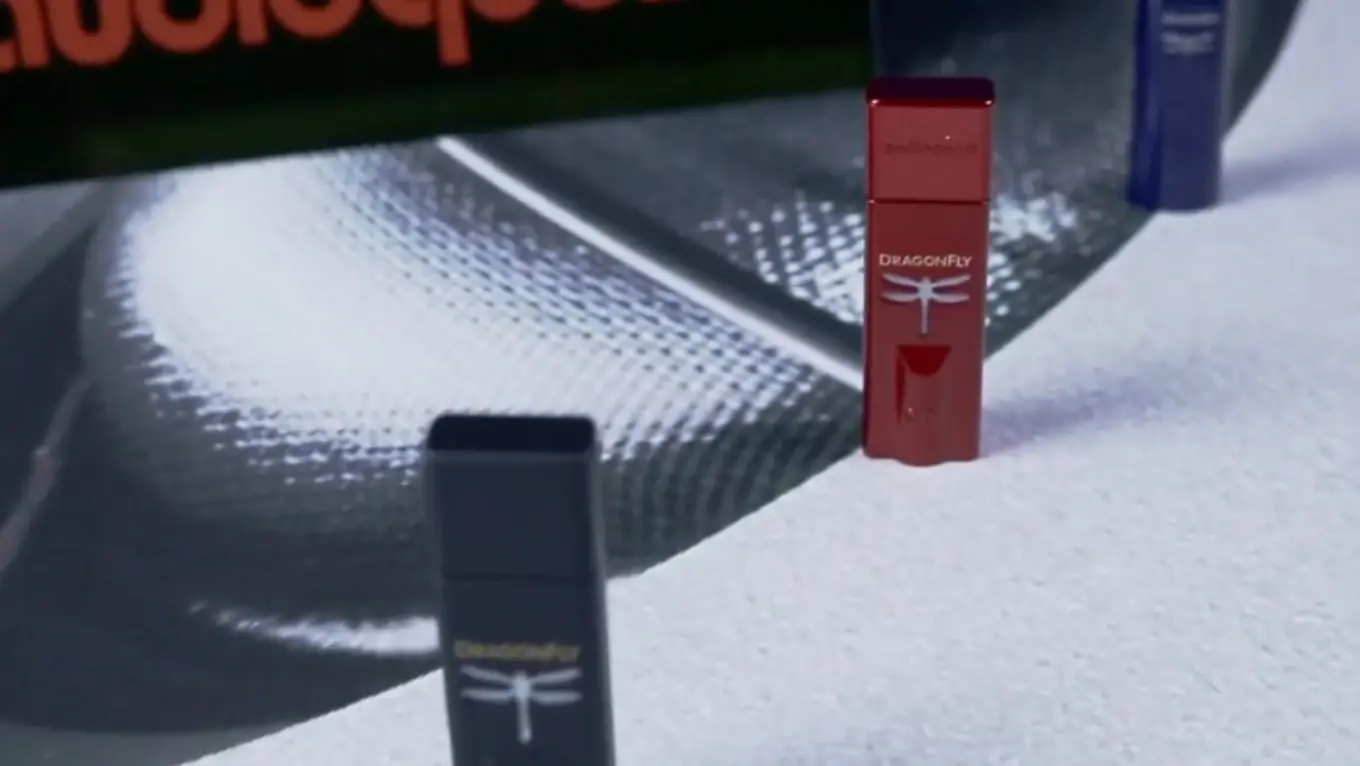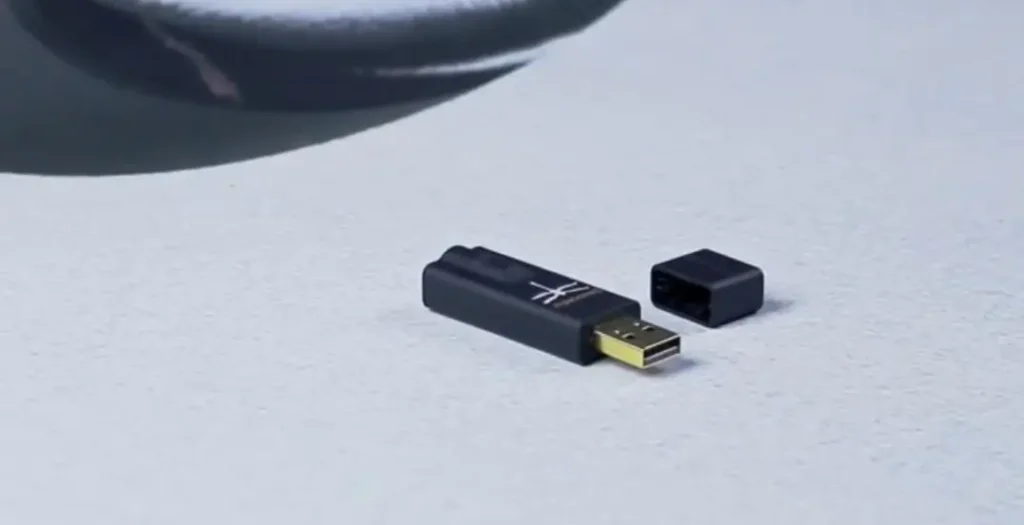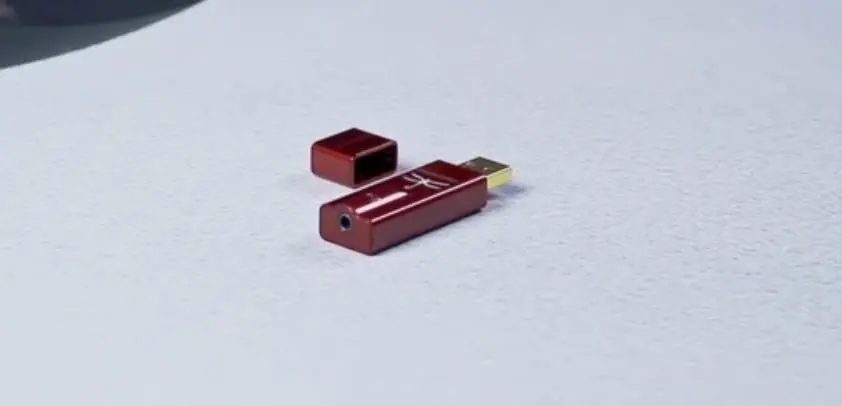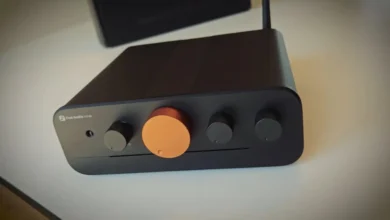
Since the weather isn’t cooperating again today, I’ve finally found some time to conduct a little comparison test. Plus, I’ve got something to read.
Competing against each other in this case are the two small and portable headphone amplifiers, DRAGONFLY BLACK and DRAGONFLY RED from AUDIOQUEST. These are the direct successors to the DRAGONFLY 1.2.
Conveniently, the power consumption of the two asynchronous USB converters has been reduced in the latest version, making them more compatible with mobile devices such as smartphones and tablets. They also place less strain on the music source’s batteries.

The DRAGONFLY RED differs from its smaller brother, the BLACK, in terms of both its signal processing and the available output voltage (2.1 V versus 1.2 V). While the RED is equipped with a 64-bit ESS9016 SABRE chip, which features digital volume control, the BLACK uses a somewhat simpler 32-bit ESS9010 chip solution from the same manufacturer with analog output control.
The new sound plugs are encased in a sturdy aluminum casing and feature a dragonfly-shaped indicator that indicates the current data processing speed, from MP3 to high-res. As usual, I don’t want to dwell on technical details too much, especially since the DRAGONFLYS have been available for some time, so feel free to Google for more details.
Preparation
Since these small headphones are particularly well-suited for mobile use, I chose the right partners for this comparison test. My iPhone 6S+ serves as the signal source, which is alternately connected to the two test subjects via a camera connection kit. My GRADO GH1, which has proven itself in excellent mobile applications, serves as my “monitoring device.” These headphones are recommended for this comparison simply because of their superb dynamic range and high resolution. Their very low weight also plays a significant role.
As usual, the music material I use is composed of various genres, including pop, rock, jazz, and classical, in order to ensure the most comprehensive assessment possible of the individual playback qualities.
Sound test
It’s always astonishing what sonic performance these two “USB plugs” are capable of. Given the retail prices of just €99.00 for the BLACK and €199.00 for the RED, both cases are truly special deals. Of course, stationary high-end solutions can always deliver even more, as a brief switch to my QUESTYLE CMA800R with the GRADO more or less dramatically demonstrated, albeit at a correspondingly “small surcharge.”
The difference to the mobile competition is much smaller, especially with the red-colored stick. A direct comparison with, for example, my OPPO HA2 reveals the subtle improvement over the original model. The resolution and detail are almost on par, but the HA2’s power reserves are more pronounced, allowing this combination to deliver more confident music reproduction. The achievable spatial illusion is also somewhat superior to the capabilities of the red DRAGONFLY.

However, I consider the reproduction of realistic spaces to be one of the biggest weaknesses of mobile systems. Especially since, when on the move, you always have to keep an eye on the power consumption of the amplifying component. For this reason, highly efficient headphones, such as lightweight on-ear or in-ear headphones, are probably the first choice for most mobile listeners. Power-hungry magnetostats or high-impedance dynamic headphones, which allow for the reproduction of the above-mentioned spaces, unfortunately generally don’t work well with the current-conducting (and rather low-performance) mobile players.
But I wanted to compare the two AUDIOQUEST models. So, back to the actual test. The keyword “spatial quality” is also a very good introduction to the topic. Within the limits of their mobile capabilities (see above), both DRAGONFLYs perform at a perfectly acceptable level in this area, although the BLACK narrows the room somewhat more in width and depth. The RED also separates musical events better within the room, and instruments and vocals are placed in a more realistic proportion to one another.
Although the bass range is reproduced with similar power on both USB KHVs, the deep bass in particular on the RED seems more contoured and better defined, making bass lines easier to follow.
The midrange is somewhat more refined and vibrant on the big brother, thanks to its higher-quality chips. The RED also has a slight advantage in terms of the richness of tone. Both DRAGONFLYs tend toward a somewhat analytical reproduction, which is typically due to the SABRE converter chips. In any case, pairing them with headphones with strong fundamentals is not a bad idea.
The high-frequency range also bears the hallmarks of the ESS series. Both KHVs deliver finely chiseled and transparent performance, although the BLACK can’t quite hide a certain roughness in the high-frequency reproduction. Its red brother also seems slightly more relaxed here, rendering the music a bit more relaxed.
Conclusion
All in all, I ended up preferring the DRAGONFLY RED, especially since, while it’s twice the retail price of the BLACK, it’s “only” €100.00 more. And in my opinion, this additional investment is worth it if you don’t necessarily have to watch every single penny. However, the BLACK is, of course, also a bit of a price-dumping proposition. So, no matter which color you choose, it’s the right one.
AudioQuest DragonFly Red Specifications
- DAC Chip: ESS Sabre ES9016 (32-bit)
- Output Voltage: 2.1V RMS (for driving high-impedance headphones)
- Output Impedance: <0.5Ω (ideal for sensitive IEMs)
- Volume Control: 64-bit bit-perfect digital (integrated into DAC chip)
- Supported Formats:
- PCM: 24-bit/96kHz
- DSD: Not supported
- USB Controller: Microchip PIC32MX (asynchronous mode, 77% lower power draw)
- Filter: Minimum-phase digital (reduces pre-ringing)
- LED Indicators: Color-coded for sample rates (green=44.1kHz, blue=48kHz, amber=88.2kHz, magenta=96kHz)
- Compatibility:
- Windows (7+), macOS, iOS (via Lightning adapter), Android
- Requires USB-A port (USB-C adapter included)
- Dimensions: 19mm × 12mm × 62mm (USB stick form factor)
- Weight: 17g
- Price: $199
AudioQuest DragonFly Black Specifications
- DAC Chip: ESS Sabre ES9010 (32-bit)
- Output Voltage: 1.2V RMS (sufficient for most portable headphones)
- Output Impedance: <0.6Ω
- Volume Control: Analog (64-step digitally controlled)
- Supported Formats:
- PCM: 24-bit/96kHz
- DSD: Not supported
- USB Controller: Microchip PIC32MX (same as Red)
- Filter: Minimum-phase digital
- LED Indicators: Same color-coding as Red
- Compatibility: Identical to Red
- Dimensions: Same as Red
- Weight: 14g
- Price: $99
Key Differences Summary
| Feature | DragonFly Red | DragonFly Black |
|---|---|---|
| DAC Chip | ESS 9016 (higher-end) | ESS 9010 |
| Output Voltage | 2.1V (better for HD600, etc.) | 1.2V (for efficient headphones) |
| Volume Control | Digital (bit-perfect) | Analog |
| Distortion (THD+N) | Lower (measured ~0.01%) | Slightly higher (~0.025%)4 |
| Build | Glossy automotive finish | Soft-touch matte finish |
Performance Notes
- Power Efficiency: Both models draw ~77% less power than previous DragonFly versions, enabling iOS/Android compatibility.
- Jitter Handling: Improved asynchronous USB protocol reduces jitter, though the Red shows marginally better performance in measurements.
- Real-World Use:
- The Red excels with high-impedance headphones (e.g., Sennheiser HD600) due to its higher output.
- The Black is ideal for budget-conscious users or those with efficient IEMs



